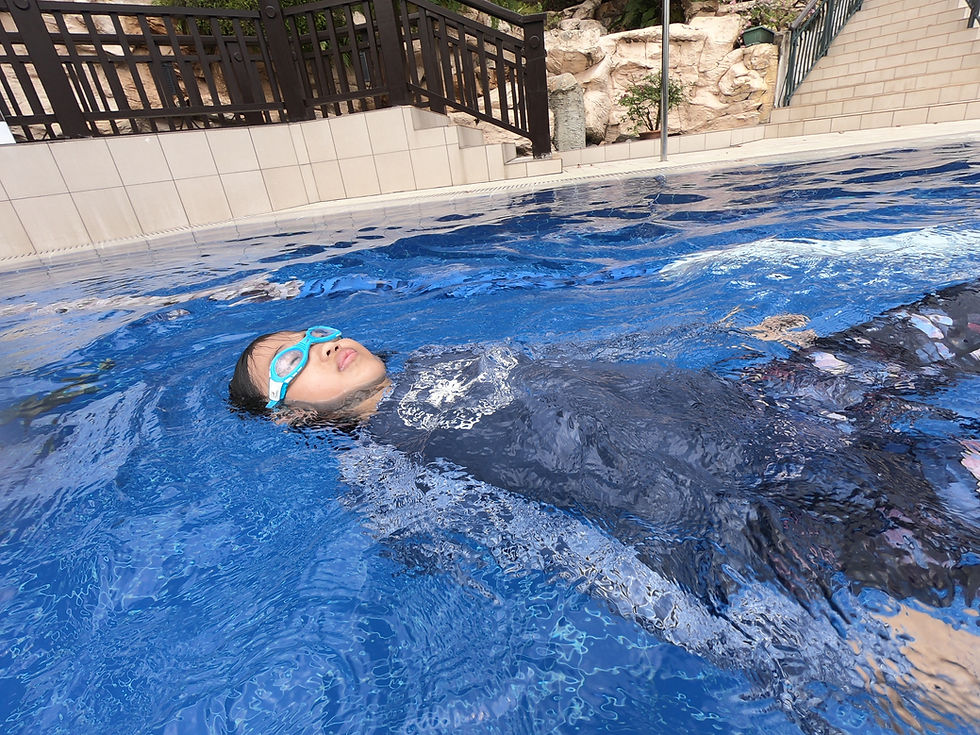How to Minimize Drag for Faster Breaststroke Speeds
- SG Sink Or Swim

- 5 days ago
- 4 min read

The Hidden Key to Unlocking Your Fastest, Most Efficient Breaststroke
Breaststroke is often called the “technical stroke” — and for good reason. While other strokes reward power and turnover, breaststroke rewards precision, patience, and hydrodynamics. In fact, up to 80% of speed loss in breaststroke comes from drag, not lack of propulsion.
The good news? You don’t need to pull harder or kick bigger to swim faster. You need to reduce resistance — by streamlining your body, refining your timing, and eliminating wasted motion.
In this guide, we’ll break down the science-backed, coach-tested strategies to minimize drag in breaststroke — so you can glide farther, kick smarter, and race faster.
🌊 Why Drag Is the #1 Enemy in Breaststroke
Unlike freestyle or backstroke, breaststroke has a stop-and-go rhythm. Each cycle includes:
A propulsive pull and kick
A glide phase where momentum carries you forward
But if your body isn’t streamlined during the glide — or if your pull/kick creates turbulence — you create wave drag, form drag, and friction drag that slows you down dramatically.
“Great breaststrokers don’t just move water — they slip through it.”— Coach Dave Salo
🐸 5 Key Ways to Minimize Drag in Breaststroke
1. Perfect Your Streamline Glide
The #1 drag reducer: A tight, horizontal body line after the kick.
✅ How to do it:
Hands locked, biceps squeezing ears
Core braced, hips high, toes pointed
Head neutral — eyes down, chin slightly tucked
Glide 0.5–1.0 seconds (longer in 200m, shorter in 50m)
🎯 Cue: “Glide like a missile — not a noodle.”
💡 Drill: “Glide + 1 Stroke” — push off, glide as far as possible, then take one stroke.
2. Narrow Your Kick — No “Frog Legs”
A wide kick creates massive frontal drag and slows hip recovery.
✅ How to do it:
Heels to butt — not knees out
Knees stay underwater and close together during recovery
Toes pointed outward, then snap together powerfully
🚫 Illegal & Inefficient: Knees breaking surface or wider than hips
🎯 Cue: “Kick like you’re snapping a towel — not opening a door.”
💡 Drill: Vertical Breast Kick — in deep water, cross arms, kick to keep chin above water. Forces compact motion.
3. Keep Your Head Low — Breathe Forward, Not Up
Lifting your head even slightly drops your hips, creating a “banana back” that doubles drag.
✅ How to do it:
Eyes look 2–3 meters ahead — not at the ceiling
Inhale quickly through the mouth as hands press back
Submerge head before arms recover
🎯 Cue: “Breathe through the keyhole — small, fast, forward.”
💡 Drill: Place a tennis ball under your chin during drills — if it drops, you lifted too high.
4. Shorten Your Pull — No “Keyhole” Deep Dive
Pulling past your shoulders or doing a deep scull creates downward force and turbulence.
✅ How to do it:
Hands enter shoulder-width apart
Sweep out slightly, then pull inward under chest
Snap hands together at sternum — don’t drag to hips
🎯 Cue: “Pull with your forearms — your hands are just along for the ride.”
💡 Drill: Fists-Only Breaststroke — swim with closed fists to force high-elbow scull.
5. Time Your Glide — Don’t Rush or Stall
Rushing = no glide = constant drag from limbs moving
Over-glying = momentum dies = you fight to restart
✅ Optimal Glide by Race:
🎯 Cue: “Glide to fly — don’t fight to survive.”
💡 Drill: Tempo Ladder — 4 x 50m: 2.2s → 2.0s → 1.8s → 2.0s stroke cycle.
📊 How to Measure Drag Reduction
⚠️ Common Drag-Creating Mistakes (And How to Fix Them)
Final Thoughts
Faster breaststroke isn’t about swimming harder — it’s about swimming smarter. It’s the inch you narrow your kick. The degree you lower your head. The second you allow yourself to glide.
When you reduce drag, you don’t just go faster —you go farther, smoother, and with less effort.
So next time you push off the wall, don’t just pull and kick.Streamline. Snap. Glide. Fly.
Pull compact. Kick tight. Breathe low. Glide smart.
Because in breaststroke, speed hides in the details — and champions polish every one. 🐸⏱️💙





Comments